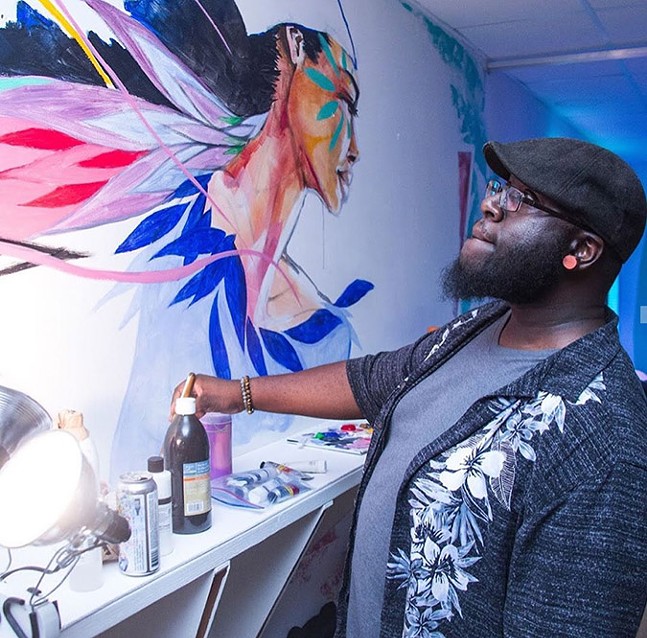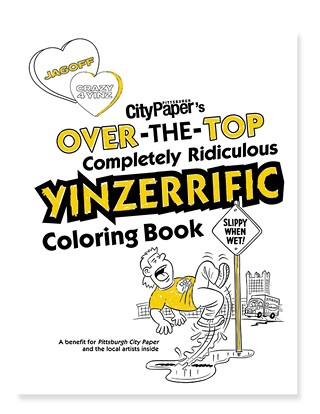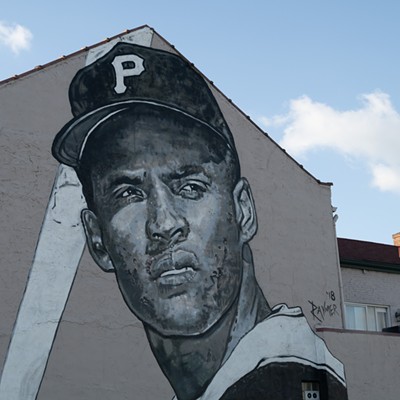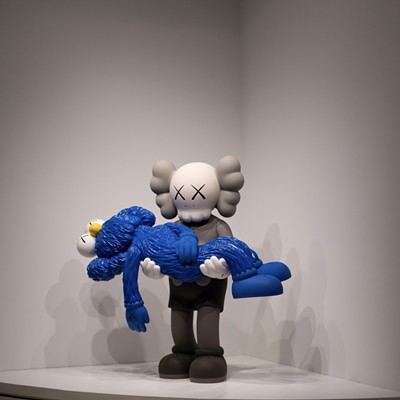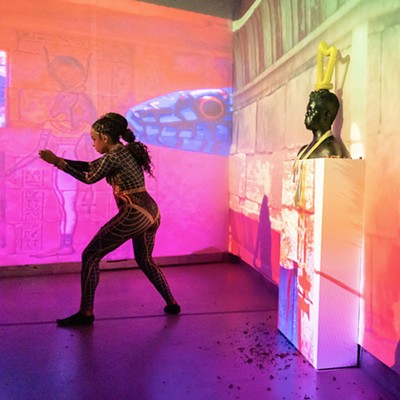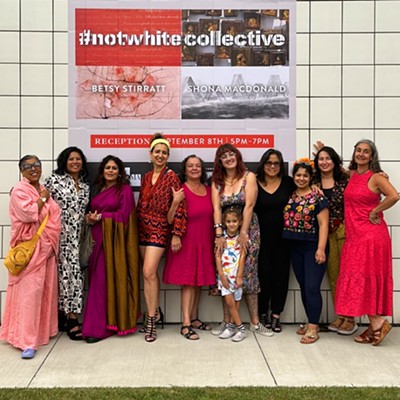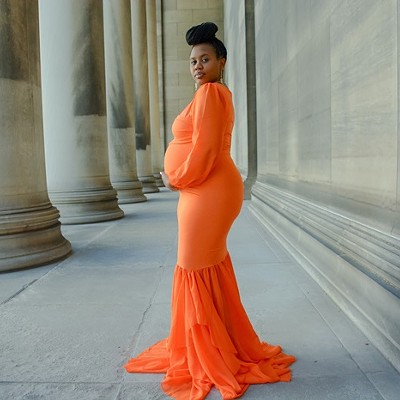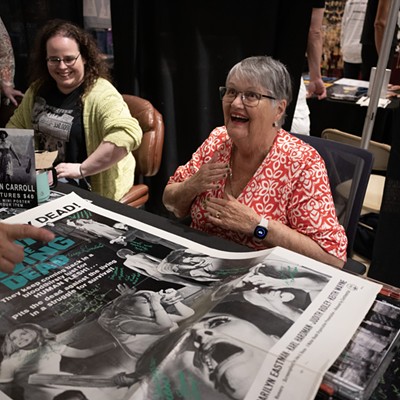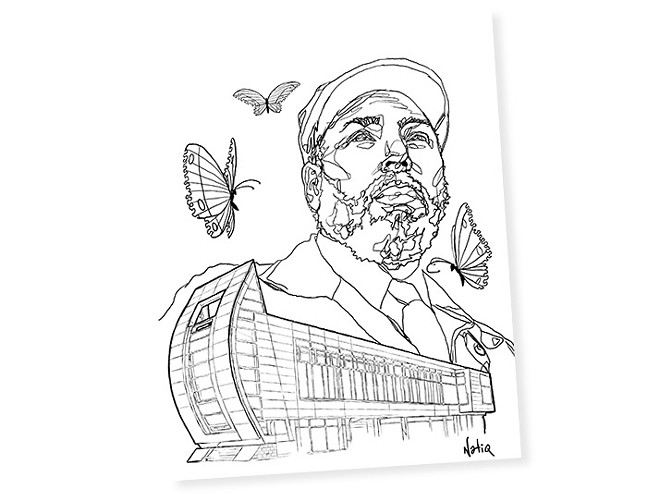
I've known since I was a little kid. I initially wanted to draw comic books. As a little kid in Alabama, I remember when the policemen and firemen came to a career day at my elementary school and asked us what we wanted to be when we grew up. I said I wanted to draw comic books that looked like me. The adults immediately said, "Well, if you're good with your hands, house painters make a really good living. Maybe you could do that." It was a crushing blow at the time, but I never stopped drawing. It was just in me and I couldn't see myself doing anything else.
You describe yourself as a self-taught artist, which is incredibly impressive when perusing your portfolio. What have you found to be your best lesson outside of a conventional classroom?
I've actually never officially taken a class, however I was able to watch some amazing artists paint live in Denver at Luz Gallery and the Space Gallery as a young adult, like Jay Paul Apodaca. The thing I found most valuable was that there is no "right way" to do art. Many of the artists I admired often wowed people with very unconventional painting methods, and I absorbed it like a sponge. It feels almost like fate that Apodaca was the first gallerist to ever give me an exhibit. I feel truly fortunate to have met them.
Can you tell me about the process that went into illustrating your Coloring Book artwork of August Wilson?
So, I have a hard time turning off my perfectionist instincts when it comes to perspective and architectural drawing, so I spent about 95% of the time working on the August Wilson Center part of the drawing. I kept finding myself trying to capture every single detail in my reference material and had to go back to erase random things multiple times before I found the right balance. I had to strive to keep only what was needed. On the flipside, I drew August Wilson in about an hour and didn't have to erase at all. I actually became emotional when I stepped back and looked at the final piece and felt like I didn't overwork it.
This isn't the first time you've done artwork of August Wilson. Do you have any personal connection to the playwright?
I don't have a personal connection with him except through his work. His work reminds me of my family in a lot of ways. His characters are flawed and never idealized. They have attributes that make you love them and make you hate them. I feel like he watched people for his plays in the same way that I watch people for my paintings. His work feels like home, and maybe that is the connection.
You are able to produce artwork in a wide variety of styles, ranging from pieces similar to the black-and-white piece like the one you did for our coloring book to vibrant watercolor paintings. Do you have a favorite medium?
Watercolor is the love of my life, as far as my art goes. It just feels right. Even though I use other media often, I feel most emotionally connected to my watercolor pieces. There's a spontaneity in it that I don't find anywhere else, and I'll always return to it.
Your portfolio highlights the strength and power of Black people, especially Black women. As a Black man, how important is it to you to use artwork to preserve Black faces on canvas for future generations?
It is vitally important to capture black faces. I strive to capture every emotion that I can, from the wildest joy to the deepest pain. I try to tell the stories that I see happening around me on a daily basis. I try to have a conversation with my viewers through my colors, lines, and poetry. Art controls the narrative, whether it is visual arts, music, or written arts like poetry or journalism, History is immortalized in art. And I want Black People to always be remembered and thought of as human. Too much of our history has been told in a dehumanizing way, so my mission is to counter that narrative. I want to capture all of the beauty, all of the ugliness, and all of the in-between parts, because we are all of that. This will be my contribution to history and the proof of my own humanity.
This coloring book is coming out during one of the most important civil rights movements in modern times. Do you think artwork has the power to bring change?
To me, artwork is one of the most important catalysts for change. Art moves hearts. Art inspires. Art motivates. Art calls people to action. When there is a strong paradigm shift, there is a shift in the art world. Throughout history, when a regime changes, the first thing to go is the art. Paintings have been destroyed. Books have been burned. A current example is the toppling of Confederate statues around the country and other statues deemed racist around the world. The people's hearts are changing and they can no longer allow such symbols of hate to exist in their current forms. New art that is reflective of the delicate balance we are finding between us is emerging and will replace it. I am honored to be amongst those who will usher in this new wave of art.
Do you believe artwork has the power to heal?
Yes. I absolutely do. I believe that medicine heals the body, and art heals the soul. I've stood in museums in front of art that seemed to flow through me and touch a part of me that is hard to describe. It energized me. It motivated me. To me, there is nothing more transformative than experiencing art that moves you.
What's next for you?
I am focusing more and more on work with a social justice theme. My upcoming work will challenge social norms like gender roles, privilege, and race. It will tackle very specific things like toxic masculinity, self-care, and what men can do to stop destroying everything we touch. I'm looking to do more work that reflects my love of urban gardening. For instance, I'm working on a collection that will be exhibited in a plant nursery owned and curated by the Soil Sisters of Pittsburgh. A lot of my work will be on a larger scale using new types of canvases. I'm truly excited about all of the possibilities.

